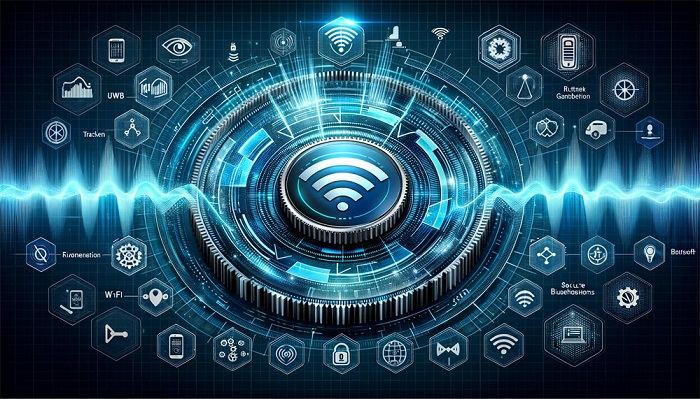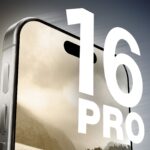Ultra-wideband (UWB) technology introduces a host of innovative tracking, sharing, and security capabilities on compatible devices, revolutionizing the way we interact with our mobile devices. While Bluetooth and NFC have long been staples for wireless communication, UWB offers unparalleled precision and versatility, thanks to its higher frequency and broader bandwidth. This advanced protocol enhances security and enables a range of applications that were previously challenging with conventional technologies.
Apple set the stage for UWB adoption with the introduction of the iPhone 11 in 2019, and since then, major Android manufacturers like Google and Samsung have followed suit, integrating UWB into their flagship devices. Although UWB is not yet ubiquitous across all top-tier Android phones in 2024, its potential to streamline daily tasks is undeniable.
Let’s explore five transformative UWB features, spanning from current applications to future possibilities, that are poised to simplify and enhance your everyday life.
1. Effortless Contact Sharing
Bringing Apple’s iOS 17 innovation, NameDrop, to Android through the power of UWB.
In the ever-evolving landscape of mobile technology, platforms often draw inspiration from each other, and Apple’s iOS 17 introduces a standout feature called NameDrop. This feature simplifies contact sharing by enabling users to exchange contact cards effortlessly by bringing the top of their iPhones together. It’s undeniably the most straightforward method for sharing contact information with new acquaintances. Users have full control over the customization of their contact cards and must approve any sharing, ensuring privacy and preventing unintended sharing.
Utilizing UWB technology, NameDrop eliminates the need for physical placement of phones on top of each other and restricts functionality to close proximity. The precise communication protocol ensures that NameDrop activates only when two iPhones are within a few centimeters of each other. With the integration of UWB in Android phones, there’s great potential for this convenient tool to make its way to future Android versions, offering users an intuitive and secure method for sharing contact information.
2. Secure, Fast, and Digital Car Keys
Are you constantly misplacing your keys? With Ultra-wideband (UWB) technology, your smartphone becomes your car key, offering unparalleled convenience and security. While smart car keys capable of unlocking and starting your vehicle without physical insertion have been available for some time, the next evolution is integrating them into your smartphone. However, traditional digital key fobs pose security risks, as their frequencies can be intercepted and exploited by unauthorized individuals.
Here’s where UWB support comes in. With its centimeter-level accuracy, a car key stored on your phone can only unlock your vehicle when it’s in extremely close proximity, providing superior reliability and security compared to alternatives like NFC, Bluetooth, or radio frequencies. Though support for UWB-enabled car keys is currently limited to select models from manufacturers such as BMW, Genesis, Hyundai, Kia, Mercedes-Benz, Mini, Ram, and Volvo, the functionality is already available. As more car brands and smartphone manufacturers adopt this technology, unlocking your car with just your smartphone becomes increasingly feasible, offering a glimpse into the future of automotive convenience and security.
3. Seamless Media Casting with a Single Tap
Experience effortless media casting with the power of Ultra-wideband (UWB), as demonstrated by Google’s innovative implementation.
Traditionally, casting media onto a speaker, TV, or display required manual intervention on your smartphone. However, UWB transforms this process by automating it, enabling seamless transfer of currently playing media between devices simply by bringing them into proximity. While Google showcased this groundbreaking feature at CES 2024, its availability is currently limited to UWB-equipped Pixel phones and the Pixel Tablet.
Regrettably, only a small subset of Pixel users can presently enjoy this convenience. However, as more smart home devices and smartphones integrate UWB chips, this feature is poised to become as effortless on Android as it is between iPhones and HomePods. This promises a future where media casting is streamlined and accessible to all, ushering in a new era of interconnected technology.
4. Enhanced Quick Share with UWB
Google is revolutionizing file sharing with Quick Share, leveraging a variety of protocols including Bluetooth, Wi-Fi, NFC, WebRTC, and the advanced UWB.
In a bid to establish Quick Share as a formidable competitor to Apple’s AirDrop, Google has merged its Nearby Share and Samsung’s Quick Share into a unified platform under the Quick Share moniker. This powerful tool enables seamless file sharing between nearby Android devices using an array of communication protocols, including the cutting-edge UWB.
While UWB support in Quick Share currently offers increased precision, reliability, and speed, the future holds even more promise for this technology in file sharing applications.
Similarly, Apple has integrated UWB technology into AirDrop with the introduction of iOS 17, allowing users to effortlessly share photos, files, links, and more between iPhones by simply holding the devices close together. Google is poised to follow suit by incorporating similar functionality into Quick Share on Android, further showcasing the advantages of UWB to users and encouraging OEMs to adopt this technology in their products. This seamless and convenient file sharing experience exemplifies the potential of UWB in shaping the future of mobile communication and connectivity.
5. Enhanced Location Tracking with Precision
Eliminate uncertainty with Ultra-wideband (UWB), providing pinpoint accuracy in locating lost devices.
One of the most compelling applications of UWB technology lies in its ability to assist in locating misplaced devices. While crowd-sourced networks like Apple’s Find My or Google’s Find My Device offer insights into the whereabouts of lost devices over long distances, UWB excels in scenarios where the device is nearby, such as within your home or car.
For instance, with an NFC-enabled iPhone, you can easily locate a lost AirTag using the Find My app, which provides directional guidance and distance information to the tracker’s exact location. This precise functionality streamlines the retrieval process compared to relying solely on audible alerts, which may not always be effective.
Google is also exploring similar capabilities for its Find My Device feature, utilizing Bluetooth item trackers, although UWB tags hold the potential to revolutionize the experience. While products like the Galaxy SmartTag already incorporate UWB technology, its widespread adoption within the Android ecosystem is still in its nascent stages, following Google’s recent announcement. As UWB technology continues to evolve and become more prevalent, users can expect an enhanced and seamless experience in locating their misplaced belongings, ushering in a new era of precision in device tracking.
Final Thought
As Ultra-wideband (UWB) technology continues to evolve, it stands at the forefront of a new era in wireless communication and connectivity. With its ability to deliver precise, reliable, and secure data transmission over short distances, UWB holds the key to unlocking a multitude of innovative applications. From simplifying everyday tasks like sharing contact information and casting media to enhancing security measures such as digital car keys and location tracking, the potential of UWB is boundless. As we embrace the advancements brought forth by this groundbreaking technology, we embark on a journey towards a future where seamless connectivity and efficiency reign supreme. Let us embrace the transformative power of UWB and envision a world where convenience and precision converge to enrich our lives in ways we never thought possible.



